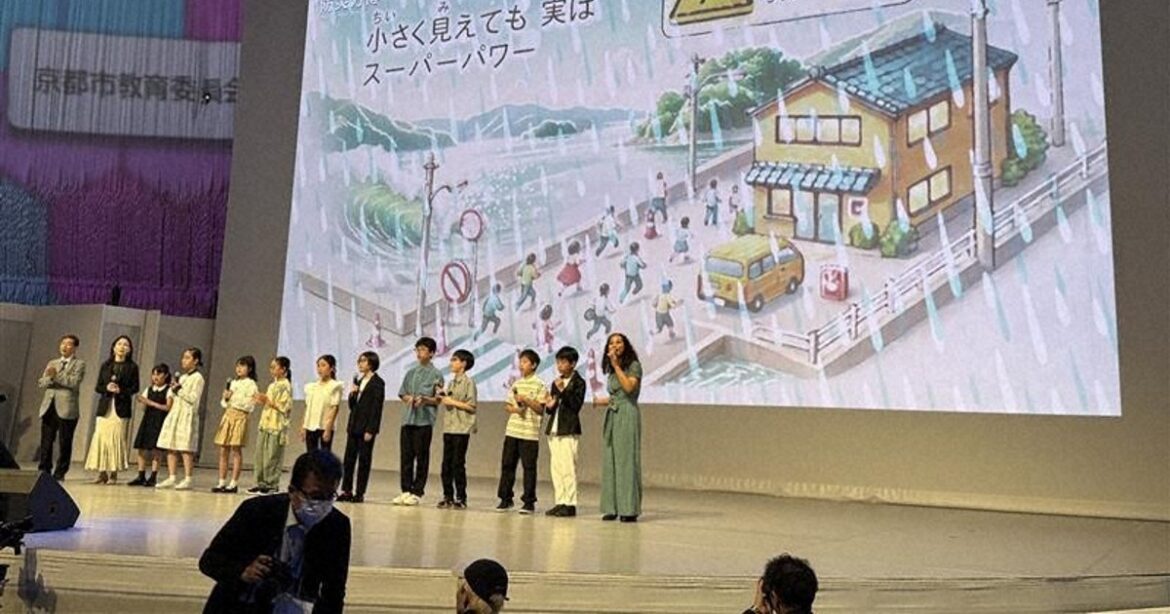
Elementary school students share ideas through speeches at the “Kodomo Bosai Banpaku” (Children’s disaster mitigation expo) at Expo Hall during Expo 2025 Osaka, Kansai, on May 28, 2025. (Mainichi/Kanako Tsuji)
OSAKA — From floating houses to transport tunnels, 10 elementary school students offered imaginative and unique ideas on disaster mitigation during presentations for an event at Expo 2025 Osaka, Kansai, at a venue in this west Japan city May 28.
The “Kodomo Bosai Banpaku” (Children’s disaster mitigation expo), a subevent of the Expo running through Oct. 13, was held by an IT firm based in the city of Osaka to explore disaster education and mitigation using cutting-edge technologies.
In the elementary school students’ division, children from the western Japan prefecture of Kagawa, including participants of a Kagawa University anti-disaster program for primary school students, thought of disaster prevention devices or systems that they wanted to see. They each had 3 minutes to explain their ideas while using illustrations created via AI chats.
Their proposals ranged from tunnels to transport necessities — inspired by the lanes at conveyor-belt sushi restaurants — to floating houses that leave nature on the earth untouched. One of the students, Rinko Nishio, from an elementary school affiliated with Kagawa University, presented an idea for “Hachidori-go,” a shelter in the form on an AI pet. In normal times the “pet” is looked after, but during an emergency, it transforms into a shape large enough to serve as a shelter during emergencies. Rinko came up with the idea while thinking about how to keep cats safe when evacuating, and explained, “I want everyone to evacuate together. I also presented it as a device that’s usually like a game anyone can enjoy.”
Ema Ogawa, a student from a school in the Kagawa Prefecture capital of Takamatsu, proposed a capsule-type bedroom. In the event of a disaster, the user simply crawls into bed for safety. Ema commented, “I get scared easily, so I wanted a safer method than evacuating outside the house.”
Koudai Higuchi, a student from another school in Takamatsu proposed a seawater desalination system. Kagawa is prone to water shortages, and so Koudai came up with the idea of using seawater. “The key point is that it is powered by solar panels. We want to conserve water not only in times of disaster, but also on a daily basis,” the student commented.
Yoshiyuki Kaneda, a specially appointed professor at Kagawa University and head of the institution’s research center on regional resilience, said, “I keenly sensed the children’s wonderful potential. They’re making speeches with the awareness that someday, they will do it themselves. It’s important to be future-oriented while also utilizing the metaverse, among other things.”
(Japanese original by Kanako Tsuji, Student Newspapers Editorial Department, Osaka Head Office)


AloJapan.com